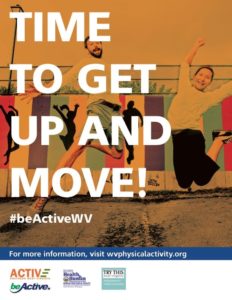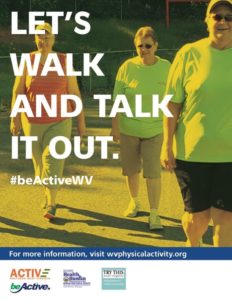Zoom Fatigue. If you haven’t experienced it, you probably know a loved one who has.
It has our eyes glazed over. It has us all waiting on Sarah Cooper to debut a “10 Tricks to Appear Smart in a Meeting” Zoom edition. Come on, Sarah. We need you!
In case you’re unfamiliar with this new fatigue, here’s a glimpse into the experience:
It’s 1:25pm. You’ve just finished lunch at your desk which is also your kitchen table. It’s time to log in to the third Zoom of the day. How’s your internet connection? Does your background look professional? Hopefully no one can hear the dogs barking next door. Wait, what did she say? I think you’re breaking up! No…you’re muted. Yes, we can hear you now. Ok, time to leave. Is it rude to log off first? Oh, thank goodness, the host ended the meeting. What’s next? Oh, another Zoom in five. Mic up!
But in seriousness, extended time on Zoom and other virtual meeting platforms is taking a physical and emotional toll on us. So much in fact that several researchers have already begun explorations into why and how this new fatigue is affecting us.

So how did we get here? In a nutshell:
Pandemic = Physical Distancing = Remote Work = Virtual Meetings = No need for travel time between meetings = Easier to plan meetings = Number of meetings increase. In fact, Zoom reports over 300 million participants on meetings every day (Reuters, 2020).
What we know about Zoom Fatigue.
Physical Effects. For some, work from behind the computer screen is just another day in the life. If you’re used to several in person meetings a day though, adjusting to screen time can mean eye strain and headaches. Check out the 20-20-20 rule that’s been helping regular computer users for ages.
Of course, this also means more time spent stationary. Lack of regular physical movement can lead to stiffness, joint pain, lethargy, and negatively affect our mood. The average adult should aim for about 20 minutes of physical activity a day. Could you divide that into 5-minute stretch or walk breaks throughout the work day?
Emotional Effects. On top of these physical symptoms which can occur at any computer desk job, the act of being on Zoom specifically can negatively affect our mentality. One study showed that, even with good internet connection, the slight audio delay between responses negatively affects our interpersonal perceptions (Schoeneberg, et al. 2014). And according to Insead Associate Professor Gianpiero Ptriglieri, video chats require more focus for us to process non-verbal cues like facial expressions, tone and body language (Manyu, 2020). This extra exertion leads to mental fatigue.
Questions to Ask Before You Schedule that Zoom.
- Could this Zoom be an email?
- Could this Zoom be a phone call?
- Could this Zoom be a walking meeting?
- Is every person on the invite list essential to this Zoom, or can someone be spared?
- Is it possible to hold this meeting in a physically distanced space as guidelines allow?
- Can you include a 2-minute physical or emotional activity break in the agenda?
But how can I help my remote employees feel less isolated without connecting on Zoom?
Ah yes. Herein lies the challenge. It is fine to offer Zoom parties, and virtual social events. Some people sometimes will really enjoy these opportunities. But if you already experience Zoom fatigue, more screen time likely won’t replenish those energy stores even if it’s a non-work-related virtual gathering. Facetime isn’t always necessary to feel connected or show you care. Here are some examples we really liked from one of our favorite workplace wellness blogs, Wellable, to help you connect with your staff:
- Create a meaningful work experience by praising work, even small accomplishments. Celebrate individual and team successes.
- Set up shared non-work interest groups on alternate virtual channels like Slack.
- Make a personal phone call, or send a simple text to check in.
- Offer a safe physically distanced meeting in person when possible.
- Open up to employees. Managers can make a space more comfortable and help employees know they’re not alone when they open about their own isolation or pandemic-related challenges.
You can read more ideas from Wellable in their article “How to Combat Employee Isolation” here.
Virtual meetings have a ton of benefits. But as we are being reminded, there can be too much of a good thing. It’s time to bring back the classic phone call. Buy a sheet of stamps and mail a nice letter.
For more ideas about combatting Zoom Fatigue, or to bring more wellness to your workplace, give us a shout!
Contact Veronica Crosier, Workplace Wellness Director at veronica@activeswv.com.
References:
- Reuters Staff. “Zoom says it has 300 million daily meeting participants, not users.” U.S. https://www.reuters.com/article/us-zoom-video-commn-encryption/zoom-says-it-has-300-million-daily-meeting-participants-not-users-idUSKBN22C1T4
- Katrin Schoenenberg, Alexander Raake, Judith Koeppe. Why are you so slow? – Misattribution of transmission delay to attributes of the conversation partner at the far-end. International Journal of Human-Computer Studies. Volume 72, Issue 5. 2014. Pages 477-487. ISSN 1071-5819. https://doi.org/10.1016/j.ijhcs.2014.02.004.
- Jiang, Manyu. “The Reason Zoom Calls Drain Your Energy.” BBC Worklife, BBC, 22 Apr. 2020, www.bbc.com/worklife/article/20200421-why-zoom-video-chats-are-so-exhausting.



